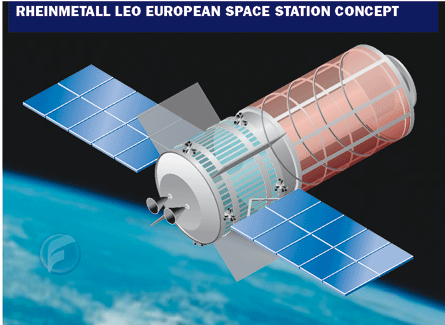Industry proposals for orbital complexes, Moon and Mars landers and a rocket capable of putting 50,000kg (110,000lb) into low-Earth orbit have emerged for a European Space Agency exploration reference architecture.
At ESA's 7-8 July architecture review meeting European industry detailed ideas that could inform ESA's development of a European strategic plan for space exploration and proposals the agency will prepare for its member states' ministers in November.
"These [industrial] studies were made so we could understand what could be elements of a European contribution [to the international exploration of the Moon and Mars]," says Piero Messina, ESA's human spaceflight directorate's co-ordination office head.
Developed over the past two years, the architecture has a phased approach with a post-International Space Station crewed LEO science outpost, robotic Moon and Mars missions, sustained manned lunar operations and, finally, a human landing on the red planet (see box). It was broadly outlined in the June report of the NASA-ESA comparative architecture assessment, conducted in the first half of this year.
The architecture's manned missions' concept of operations requires multiple LEO launches of the 50,000kg rocket, described as a future version of the EADS Astrium Ariane 5 that has six solid rocket boosters, instead of two, and a twin Vinci engine upper stage. For Moon missions three launches of this Ariane X would orbit a lunar lander, its Earth departure stage (EDS) and a second EDS for a crewed spacecraft. The lander and its EDS would dock in Earth orbit and go to a low lunar orbit (LLO) Lunar Space Station (LSS). The crewed spacecraft, launched by a fourth unidentified rocket, would also dock with its EDS and then goes to the LSS for crew transfer to the lander for the descent.
 |
|---|
Above: Dusseldorf based-defence technology company Rheinmetall proposes this low Earth orbit space station concept |
Astrium's X-Lander development concept evolves a design through to its use on Mars for ExoMars and Mars sample return (MRS). Drop tests from helicopters by 2011 lead to ExoMars in 2014, then a 2016 lunar first flight and finally MSR in 2022. Its drop test lander has a 500kg mass and would demonstrate precise landing systems. Astrium expects a robotic lander and a lunar ascent vehicle to need 10,600lb thrust, while a manned descent vehicle would require about 15,700lb.
Thales's LSS proposal is a 29,000kg station consisting of a 14,600kg Automated Transfer Vehicle-like service module and 14,400kg ISS node with robotic arm, operational in 2024. The comparative architecture report says of the LSS: "Crew rotations on the [Moon's] surface could be extended well beyond six months, if the [NASA Orion crew exploration vehicle] could dock with an [LSS] and depend on [it] for power."
The LSS would also be as a safe haven when surface habitats fail or crew are injured, during a solar or cosmic radiation event, or should an uncrewed Orion or ESA-Russian Crew Space Transportation System (CSTS) in LLO malfunction. In a polar orbit the LSS could be accessed any time by polar outpost crews or every 14 days by astronauts anywhere else on the Moon. From the LSS an Earth return could also be conducted every two weeks.
Another LSS role would be as refuelling depot for extra propellant for any time-return trajectories and for trans-Earth injection stage storage. While NASA envisages cryogenic propellants for Orion, Astrium's proposals include using storable hypergolic fuels and oxidisers for LSS refuelling of CSTS. Astrium also says CSTS would be a launched by a Yuzhnoye design bureau Zenit-type launcher from the new cosmodrome in Vostochny, Russia from 2018.
Of these reference architecture proposals, a CSTS technology development programme is likely to be the first test of government support at the November ministers meeting.
Source: Flight International



















